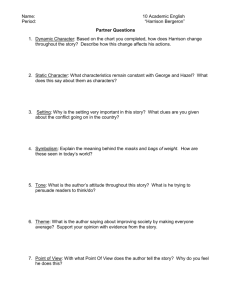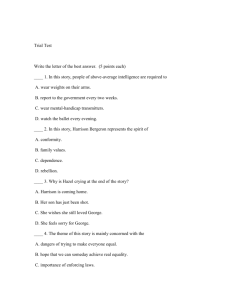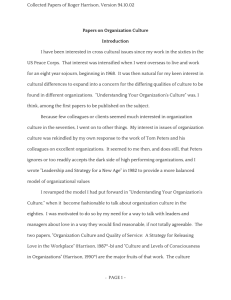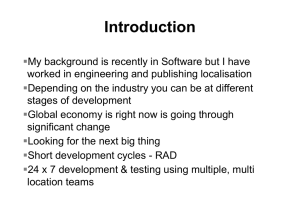Power Point - ASE - University of Reading
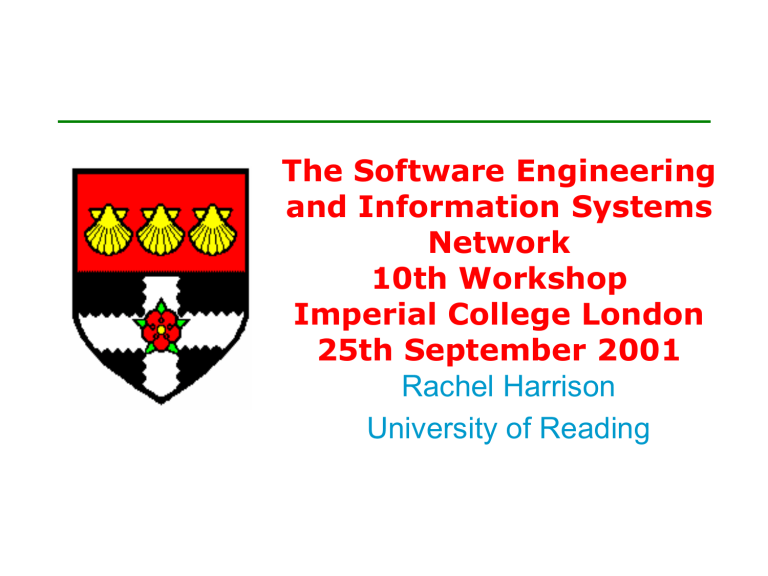
The Software Engineering and Information Systems
Network
10th Workshop
Imperial College London
25th September 2001
Rachel Harrison
University of Reading
Two Sides to Every Story:
Reflections from the SEISN
Aims : to reflect on the highlights, problems and successes of the past 3 years.
how has our research changed?
how have the two communities changed?
has the gap between us narrowed?
has our understanding of each other’s community changed?
can we work together with greater understanding and appreciation?
can we disseminate this understanding to colleagues?
Structure
After lunch participants will be split into working groups and will be given a relevant question to focus on, such as:
What are the facilitators and inhibitors of rapid application development?
Managing Information and Knowledge
Co-Evolution of Business Processes and
Technologies
Localisation and Globalisation of business
& IT
Workshops
Mar 99 Delivering Business Performance: Opportunities and Challenges for IT
Jun 99 Multidisciplinary and Interdisciplinary Research
Sep 99 SE and IS - A Symbiotic Relationship?
Jan 00 e-commerce - Issues and Directions
Mar 00 Emerging Organisations and Evolving Structures:
Components, Change and Evolution
Jun 00 IS in Today's World - Exploiting e-commerce
Sep 00 e-futures - Managing Rapid Change
Jan 01 Business Process Modelling and Systems Evolution
Sep 01 Reflections
1999
Delivering Business Performance: Opportunities and
Challenges for IT perceptions of key issues within an organisation change over time according to progressive changes in technology. (RDG)
Multidisciplinary and Interdisciplinary Research
Practical problem analysis and structuring is based on recognising the elementary problem frames characterising the subproblems of which a realistic problem is composed. This composition raises fresh issues and difficulties, both in analysing problems and in constructing solutions. Identifying these difficulties, and developing a standard repertoire of techniques to overcome them, is the classic process by which traditional engineering disciplines and their products become mature and reliable (MJ).
1999
SE and IS - A Symbiotic Relationship?
Key issues within this relationship include effective communication, (verbal, textual and visual) is particularly critical between different disciplines because communication is influenced by context, cultural environment as well as prior knowledge and experience (DEA, DW, KB, DB, MML)
2000
e-commerce - Issues and Directions
Existing approaches to RE can’t cope with delivering systems in internet time. For small & medium size systems we should move to RE processes that are more integrated with development processes. A culture change is needed, breaking down the barriers between business & IT (IS)
Emerging Organisations and Evolving Structures:
Components, Change and Evolution
In the absence of collocation, team members may be unable to maintain interpersonal relationships (JN)
Technological constraints interfere with business decisions (RV)
2000
IS in Today's World - Exploiting e-commerce
The world of IS and IT is infamous for its penchant to embrace the latest fads and fashions with little critical assessment and even less reflection on hard-won lessons of the past. (RDG) e-futures - Managing Rapid Change
In the rush to meet the demand for e-commerce systems are technologists in danger of repeating the mistakes of the software crisis of the 60s? (MH)
The concept of a living IS may help to change our understanding of the fundamental needs of a successful system in terms of design and evolution in the workplace if we regard it as an entity requiring daily attention from its creator
.
(RP)
2001
Business Process Modelling and Systems Evolution
Complex interactions between the multiple elements within a social ecosystem contribute to the creation of IT legacy systems
(EMK)
When an IT system is viewed as a part of the business organisation, and both the IT and business systems are designed in the same time, the gap between them will be minimal (KL)
IT exists to support the effective operation of an organisation, and must therefore respond to its needs (DB)
9.45am
10.15am
10.20am
11.00am
11.20am
12.10pm
13.00pm
15.15pm
15.30pm
16.20pm
16.30pm
Agenda
Registration and Coffee
Welcome - Rachel Harrison
Keynote - David Avison
Tea/Coffee
Keynote – Keith Bennett
Lunch
Working Groups
Tea/Coffee
Working Group Reports
ISEN – Paul Layzell
Conclusions and Close
Working Groups
The Leader's role is to initiate discussion, organise feedback to the workshop, and produce a short written summary for publication at a laterdate.
Agenda:Quick intros, select scribe and presenter, review deliverables,discuss, prioritise, draft presentation of ideas.
Working Groups
Method: SWOT analyses or Critical Success
Factors.
Deliverables:
Scope of discussion.
3 most important points (for opportunities & challenges).
Directions for research.
Working Group Aims
WG 1: To present, review, critique and compare the facilitators and inhibitors for rapid application development
WG 2: To present, review, critique and compare alternative methods of managing information and knowledge
WG3: To present, review, critique and compare alternative approaches to the co-evolution of business processes and technology
WG4: To present, review, critique and compare the effects of localisation and globalisation of business and IT
Allocation
Rapid application development
David Avison, Paul Dunning Lewis, Paul Layzell, Helen
Bland, Frank Stowell
Managing information & knowledge
David Targett, Carol Brooke, Tim Millea, Rachel Harrison,
Co-evolution of business processes & technology
Manny Lehman, Roger Elvin, Helen Edwards, Stephen Cook
Localisation & globalisation of business & technology
Keith Bennett, Bob Bishop, Nik Mehandiev, Hussein Zedan
More Information
http://www.cs.rdg.ac.uk/~rh/index.html
http://www.seisn.reading.ac.uk
Email: rachel.harrison@reading.ac.uk
Prof. Rachel Harrison
Department of Computer Science
University of Reading
PO Box 225, Whiteknights
Reading RG6 6AY
